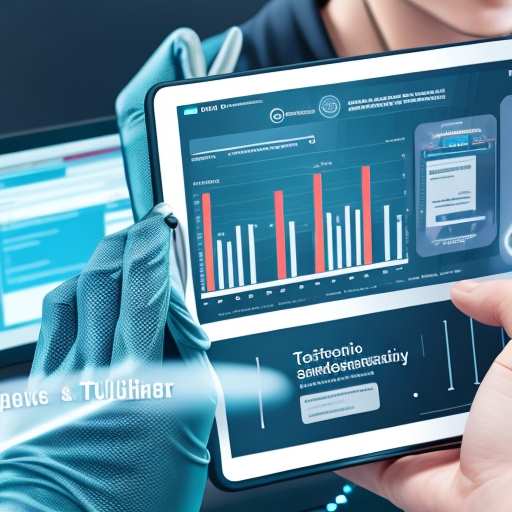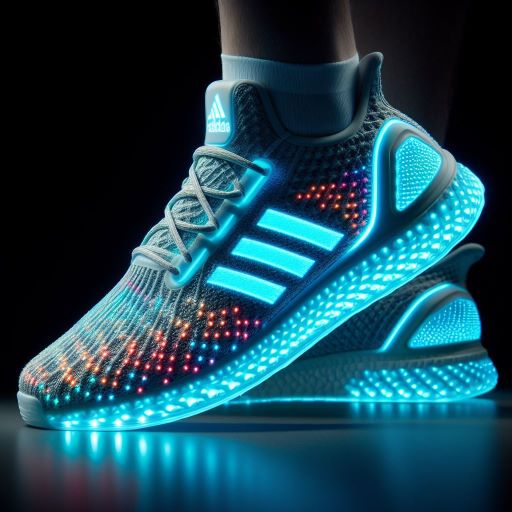Envision garments that not only provide comfort but also intuitively respond to your needs. From shirts tracking your heart rate to dresses illuminating with your emotions and jackets equipped with built-in heating elements – welcome to the captivating realm of e-textiles!
- Definition of E-textile
- E-textile Network
- Why E-Textiles a Fashion Revolution
- E-textile Uses.
- E-textile in medical or health sector
- Companies example in E-textile
Definition of E-textile

E-textiles, the fusion of electronics and textiles, represent a captivating frontier in both fashion and technology. By seamlessly embedding electronic components such as conductive threads, sensors, and LEDs into fabrics, e-textiles open up a world of possibilities that transcend traditional clothing. From garments that monitor health metrics and adapt to environmental changes to interactive apparel that responds to stimuli like music or notifications, the potential applications of e-textiles are boundless. Moreover, as advancements continue to push the boundaries of materials and techniques, the future holds even more promise, with the prospect of garments that change color or shape dynamically, and biocompatible sensors woven directly into clothing for personalized health monitoring. In essence, e-textiles not only revolutionize the way we dress but also pave the way for a new era of functional and expressive clothing that enhances our lives in countless ways.
E-textile Network
Why E-Textiles a Fashion Revolution
E-textiles transcend mere aesthetics, offering a glimpse into a transformative future:
- Smart clothing: Picture fitness trackers seamlessly integrated into your workout gear or discreet health monitors stitched into everyday attire. E-textiles seamlessly integrate health monitoring into our daily routines.
- Interactive fashion: Whether it’s dresses altering color in response to phone notifications or jackets illuminated by music beats, e-textiles redefine clothing as a dynamic form of self-expression.
- Adaptive clothing: E-textiles can craft garments responsive to the environment, such as jackets adapting to temperature changes or attire providing pressure therapy for chronic pain relief.
E-Textiles: Navigating the Basics Guidance

Venturing into the world of e-textiles may seem daunting, but it’s surprisingly accessible. Here’s a beginner’s toolkit to ignite your creativity:
- Conductive threads: These serve as the sewing needles of e-textiles, facilitating the flow of electricity through fabrics, enabling the creation of circuits within the material.
- LilyPad Arduino: A miniature iteration of the renowned Arduino microcontroller board, tailored for e-textile projects. Featuring large sewing holes and a washable design, it enables integration of basic electronic functions like lighting control or sound detection.
- Sewable LEDs: Diminutive LED lights sewn directly into fabric, allowing for the addition of luminous effects to your creations, with programmable capabilities for diverse lighting patterns.
An abundance of online tutorials and starter kits awaits, ensuring you embark on your e-textile (electronic textile) journey with ease, crafting dazzling projects in no time!
E-textile Uses.
Beyond the Basics: Delving into Advanced E-Textiles
As you delve deeper into the e-textile universe, you’ll encounter an array of cutting-edge materials and techniques:
- Electrochromic fabrics: Picture fabrics metamorphosing in color based on electrical signals, ushering in interactive fashion possibilities, from mood-reflecting clothing to informational displays.
- Shape memory alloys: Alloys altering shape in response to heat or electricity, potentially creating self-adjusting garments or transformative attire.
- Biocompatible sensors: Vital sign-monitoring sensors woven into clothing, offering real-time insights into health and performance, heralding a new era of personalized healthcare.
Business Opportunities in E-Textiles

The potential of e-textiles extends far beyond individual creators. Here’s a look at the exciting –>business opportunities this field presents:
- Smart clothing development: Companies can develop and manufacture smart clothing for fitness, healthcare, and workplace applications. Imagine athletic wear that tracks performance metrics or work uniforms with built-in safety features.
- E-textile component manufacturing: There’s a growing demand for specialized materials like conductive threads, biocompatible sensors, and miniaturized electronics. Companies can cater to this need by supplying these essential components.
- Contract manufacturing: E-textile integration requires specialized skills and equipment. Businesses can offer contract manufacturing services to help designers and brands bring their e-textile ideas to life.
- Design and development: E-textile design requires a unique blend of fashion design and technical expertise. Businesses can offer design and development services to help clients conceptualize and create innovative e-textile products.
Predicting the exact cost of e-textile businesses in the future is tricky, but here’s a breakdown of the factors that will influence it:
Decreasing Costs (E-textile):
- Material advancements: As e-textiles become more mainstream, the production of conductive threads, sensors, and other components is expected to become more efficient, driving down costs.
- Economies of scale: With wider adoption, economies of scale will kick in, bringing down the cost of manufacturing e-textiles due to higher production volumes.
Increasing Costs (E-textile):
- Complexity of e-textiles: The more intricate the e-textile (think multiple sensors, complex programming), the higher the overall cost due to the increased materials and expertise required.
- Research and Development: Innovation in e-textiles is constant, and businesses that stay at the forefront by incorporating cutting-edge features will have higher R&D costs.
Overall Trend in electronic textile:
Despite the ongoing innovation costs, the general trend suggests a decrease in e-textile business costs. Here’s why:
- Mass production potential: E-textiles have the potential to be mass-produced like regular clothing, significantly driving down costs.
- Maturing technology: As the technology matures, manufacturing processes will become more streamlined, leading to cost reductions.
However, the cost structure will vary depending on the business model:
- Smart clothing development: Companies creating high-tech garments with multiple sensors and complex functionalities will likely have higher costs compared to businesses making simpler e-textiles with basic functionalities.
- E-textile component manufacturing: The cost of manufacturing these components will depend on the complexity of the materials and the level of miniaturization required.
Other side of E-textile in medical or health sector
E-textiles are like regular clothes, but with special abilities that can help doctors and patients in the medical world. Here’s how they’re great for medicine:
- Keeping an Eye on Health: Imagine wearing clothes that can check your heart rate, breathing, and temperature without needing any extra devices. E-textiles can do that, making it easier for doctors to keep track of how you’re doing.
- Super Comfy Monitoring: Unlike bulky medical equipment, e-textiles are soft and comfy to wear. This means patients can move around freely while still being monitored, making it more convenient and pleasant for everyone.
- Watching from Afar: E-textiles let doctors keep an eye on patients even when they’re not in the same place. This is super helpful for people who live far away from hospitals or need long-term monitoring for conditions like diabetes or heart problems.
- Spotting Problems Early: By checking things like heart rhythms or breathing patterns constantly, e-textiles can catch issues early on. This means doctors can step in sooner to help, potentially preventing bigger problems down the road.
- Helping with Healing: E-textiles can also be used in therapy and rehab. Imagine wearing clothes that can tell you if you’re moving correctly during exercises. They can help people recover from injuries or surgeries more effectively.
- Keeping an Eye on Wounds: E-textiles can even help with wound care. By putting special sensors in bandages, doctors can monitor how wounds are healing without needing to change bandages as often. This makes it easier to know if things are getting better or if there’s a problem that needs attention.
In simple terms, e-textiles are like smart clothes that make medical care easier, more comfortable, and more effective for both patients and doctors.
Companies example in E-textile

Imagine clothes that track your workouts, jackets that keep you warm in the harshest winters, or shirts that monitor your health. That’s the world of electronic textiles (e-textiles) – where fashion meets function with a dose of high tech.
This booming industry is revolutionizing the way we interact with clothing, and several companies are at the forefront of this exciting movement. Let’s meet some of the key players weaving the future of textiles:
- Adidas AG: Step up your workout with Adidas’ smart fabrics! Their clothes integrate sensors that track your heart rate, breathing, and temperature, giving you real-time data to optimize your training.
- AiQ Smart Clothing Inc.: This Taiwanese company isn’t just about fitness. They’re developing smart clothing for healthcare, too. Imagine shirts that monitor vital signs or garments that track your movement for injury prevention. AiQ is making it happen.
- Clothing+: Think fabrics with built-in circuits? Look no further than Clothing+. This Canadian company is a leader in integrating electronics into textiles, creating seamless garments that are both stylish and functional.
- DuPont de Nemours Inc.: DuPont isn’t new to the innovation game. They’re bringing their expertise to e-textiles with smart solutions for temperature management and protection. Their fabrics can keep you cool in the summer heat or warm in the freezing cold, making them perfect for athletes, outdoor enthusiasts, and even industrial workers.
- Gentherm Incorporated: Feeling chilly? Gentherm’s got your back (literally!). Their smart textiles use clever tech like phase change materials and heating elements to create garments that automatically adjust to your temperature, ensuring ultimate comfort.
- Interactive Wear: Founded in 2005, Interactive Wear is all about integrating electrical functionalities into fabrics. Their creations go beyond warmth – think lighting, sensing, and even feedback mechanisms. The possibilities are truly electrifying!
- Textronics: This Indian company is a powerhouse in the e-textiles industry. They develop a wide range of smart clothing solutions, from fitness trackers woven into your shirt to medical monitoring devices embedded in your garments. Textronics caters to athletes, healthcare professionals, and even military and industrial sectors.
The Future of E-Textiles
While e-textiles are in their infancy, their potential is staggering. Envision a future where clothing transcends mere attire, becoming intelligent companions enriching our lives in myriad ways. E-textiles harbor the promise of revolutionizing healthcare, fashion, and human-computer interaction alike.
for the more knowledgeable Contant click here —> Read New




Leave a Reply